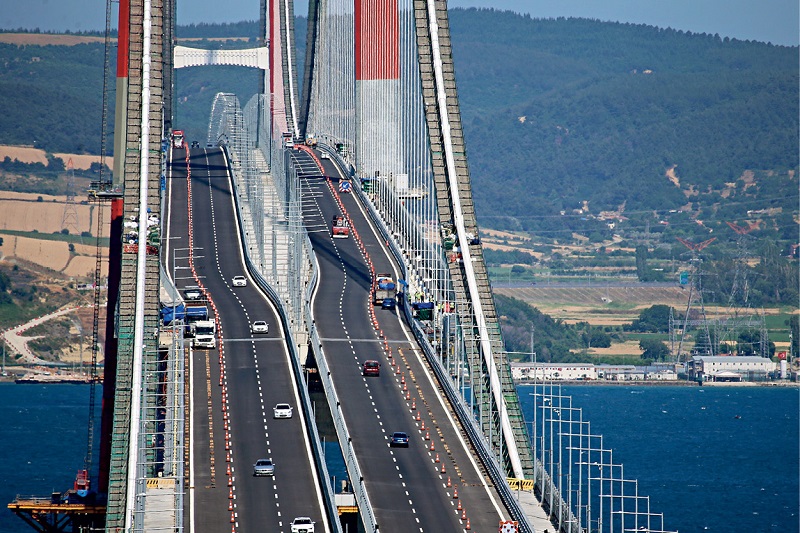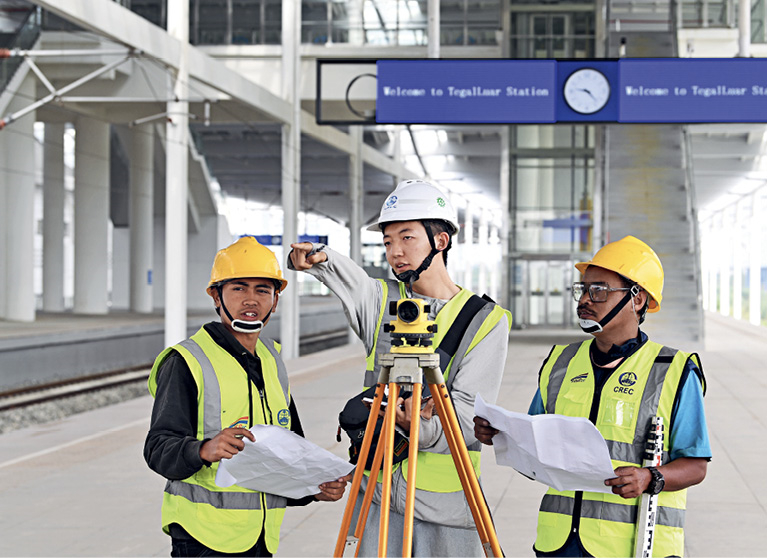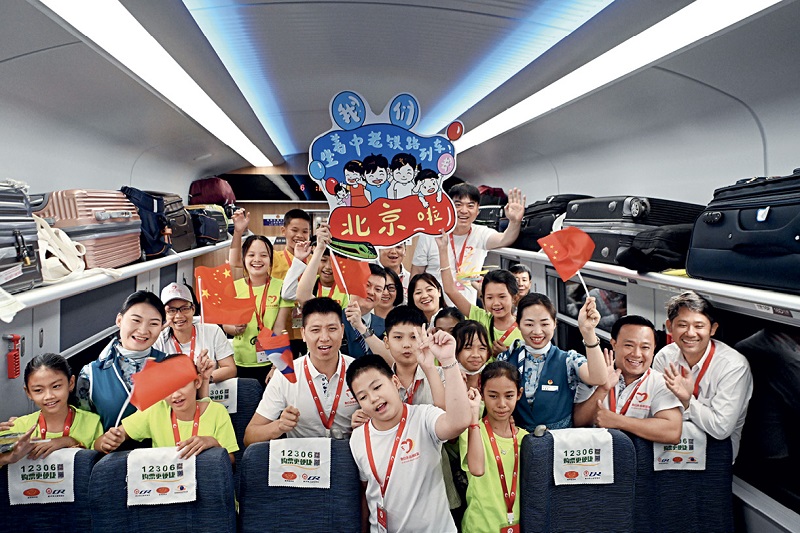This article reflects on the achievements of and some negative voices on BRI projects.
This year marks the 10th anniversary of the Belt and Road Initiative (BRI). Over the past decade, visions have become realities. Even though we have a million reasons to celebrate on such a memorable occasion, I suggest we take time to reflect.
What should we think about? The BRI and its decade-long practice have given us much space to think. The main questions I have been pondering over are: What has the BRI done right? Why has it received the support and participation of so many countries and international organizations? Which aspects of the BRI have not done very well, causing some countries and people to misunderstand, or even deliberately distort, attack, confront, and suppress it?

A view from the 1915 Canakkale Bridge as the catwalk is being removed in Canakkale, Türkiye, on June 18, 2022.
Achievements over the Past Decade
First of all, we can see the fruits of the BRI during the past 10 years from the following figures.
As of January 6, 2023, China had signed more than 200 agreements with 151 countries and 32 international organizations for cooperation under the BRI. A batch of infrastructure projects had been implemented, a considerable number of which had been completed and put into operation, including the China-Laos Railway, Mombasa-Nairobi Railway, Addis Ababa-Djibouti Railway, Karakoram Highway, Phnom Penh-Sihanoukville Expressway, Maputo Katembe Bridge, China-Maldives Friendship Bridge, Peljesac Bridge, Padma Bridge, Gwadar Port, Hambantota International Port, and Kyaukpyu Port.
A number of energy projects, especially new energy ones, have also been completed and put into operation. They include Karachi Nuclear Power Plant, Karot Hydropower Station, the Nam Ou cascade hydropower project, De Aar wind power project, Al Dhafra PV2 solar power plant, and Morocco’s Noor Tafilalt 120MW solar project.
As international cooperation on production capacity deepens, many industrial parks have been built in developing countries in Asia, Africa, Latin America, and Europe. Examples are the China-Belarus Industrial Park, Thai-Chinese Rayong Industrial Park, Eastern Industry Park in Ethiopia, and Sihanoukville Special Economic Zone in Cambodia. More and more enterprises and businesses from across the world are building presence in these industrial parks.
Besides, China and other BRI participating countries have also jointly built a number of laboratories to carry out scientific and technological cooperation and research in desert control, modern agriculture, healthcare, marine biology, and new energy among other fields. The introduction of China’s hybrid rice into the African continent is greatly improving the grain yield in African countries. Chinese juncao mushrooms helped people of the South Pacific island countries shake off poverty and become rich. The China-Europe freight trains have been injecting new momentum to efforts in building stable supply and industrial chains in the Eurasian continent. China’s Western Land-Sea Corridor now connects the country’s western region with more than 300 ports in over 100 countries.
Over the past decade, Chinese enterprises have invested about US $1 trillion in BRI projects. The investment has directly or indirectly benefited a group of countries whose population accounts for 65 percent of the world total, as it rapidly improved basic infrastructure, such as water, electricity, and gas, as well as education and health care in these countries. As a result, local transportation costs have been lowered, the industrialization process has been greatly advanced, and new job opportunities have been created. All these achievements are directly conducive to the economic development of those countries and contribute to their efforts to alleviate poverty.
At the same time, we also see that Chinese enterprises have expanded their overseas investment market through the joint construction of the BRI. The construction of major projects can also, to a certain extent, promote trade cooperation between China and its partner countries. It is fair to say that the joint construction of the BRI has promoted common development of China and its partner countries.

Crew from China and Indonesia participate in the construction of the Tegalluar Station of the Jakarta-Bandung High-Speed Railway (HSR) on July 1, 2023 in Bandung, Indonesia.
How Were These Achievements Made?
Based on my personal observation, the BRI has done at least three things quite right over the last 10 years.
First of all, it established a correct theme of promoting development. Building the BRI is about promoting development through various ways, including developing infrastructure, energy industry, trade, industrialization, urbanization, agriculture, and the rural areas. It is also about development on the national, regional, and global level.
Economic development, both the foundation and focus of the BRI, helps countries including China accelerate their modernization process. The BRI also promotes people’s all-round development and the development of society. All of this contribute to efforts to realize the United Nations 2030 Sustainable Development Goals.
Second, it chose the correct implementation path of starting with infrastructure construction. The BRI aims to build a better regional and global connectivity network, allowing various production factors to flow more freely. This helps reduce business costs, and achieve more efficient interconnected regional and global growth.
Third, a correct institutional system has been established. The system defines BRI’s ultimate goal, which is to build a community with a shared future for mankind. It also shows the BRI to be open and inclusive, follows the basic principles of extensive consultation, joint construction, and shared benefits, and adopts a cooperation approach featuring government guidance, market orientation, enterprises playing the leading role, pragmatic cooperation, and compliance with international standards.
Why Are There Voices Against the BRI?
Since the BRI is right in these key aspects, why is it that some countries and people still oppose it?
First, there are some misunderstandings. For example, as for the theme of jointly building the BRI, which is to promote development, some countries and people mistakenly believe that China wants to seek hegemony through it. For another example, we mentioned that the focus of effort in implementing the BRI is infrastructure construction, which will facilitate free flow of production factors, and in turn, global common development. However, there are some people who mistakenly believe that China is practicing “debt-trap” diplomacy and neocolonialism with the aim of controlling other countries politically and plundering them economically.
Since the BRI is only 10 years old, China hasn’t done enough in the study of international cooperation under the BRI and corresponding international communication. Some misunderstandings are understandable, but it requires China to put more effort in these areas and help the international community correctly understand the BRI.
Second, there are voices that some BRI projects were not well implemented. For example, some claim that there is a lack of information transparency in the implementation, and some accuse businesses carrying out BRI projects of destructing the ecology or polluting the environment. There are also voices criticizing the BRI, saying its projects haven’t hired enough local workers or female workers, or did poorly in labor protection.
I went on field trips to more than 20 BRI projects. I saw how they have helped participating countries improve local transportation conditions, increased power supply, promoted trade development and industrialization, ensured food security, created new employment opportunities, reduced poverty, added export earnings, and improved education and health services in these countries.
These are the basic facts. Many BRI projects have been completed and are currently operating smoothly, continuing to generate a positive impact on the aspects I have mentioned. At the same time, I did find some problems during my field research as well.
For example, I found that some projects could hardly make ends meet after being put into operation, creating significant financial pressure. Some industrial parks, after they were completed, didn’t get the investment and supporting facilities as anticipated.
Besides this, some environmental issues did exist in some of the early BRI projects, which caused opposition from local villagers. Political instability and frequent policy changes in some countries also forced several BRI projects to halt, resulting in economic losses. Some projects were adversely affected by changes in international geopolitics.
Third, some countries oppose the BRI in the interest of their own strategic goals, or even deliberately distort, attack, and confront it.

On May 25, 2023, a group of 100 pupils from Laos take a special trip of friendship to Kunming, China, on the China-Laos Railway, before heading to Beijing on a high-speed train.
What Can Be Done?
In the end, we must make an objective judgment on the construction of the BRI. In my opinion, we can improve the joint construction of the BRI in two ways.
On the one hand, the Chinese government and enterprises should strengthen cooperation with host governments and local enterprises. While continuing to promote the economic development of host countries with BRI projects, they should pay more attention to promoting social development in the future.
In particular, the implementation of BRI projects should help advance human rights protection in host countries, including improving local people’s rights to employment, education, and security, their environmental rights, digital rights, as well as the rights of women and children.
On the other hand, infrastructure projects usually need large investment and a long construction cycle, but generate low investment return, and are usually vulnerable to geopolitics and macroeconomic policies. Therefore, Chinese investors need to enhance their risk prevention awareness and take precautions.
Chinese enterprises should guard against risks in political, economic, social, cultural, legal and other fields, so as to ensure the safety of their investment in BRI projects and their financial sustainability. In this way, the BRI can be translated into tangible benefits in a sustainable and high-quality manner.
In conclusion, China and other participating countries and enterprises in the BRI should further strengthen cooperation. Drawing on the experience and lessons from the past decade, they need to prove to the world with practical actions that the joint construction of the BRI has indeed promoted global common development, enhanced the livelihoods and well-being of people around the world, brought tangible benefits to all participants, improved the human rights of the people of various countries, and played a positive role in building a community with a shared future for mankind. 
HU BILIANG is executive dean and professor of economics of the Belt and Road School of Beijing Normal University.